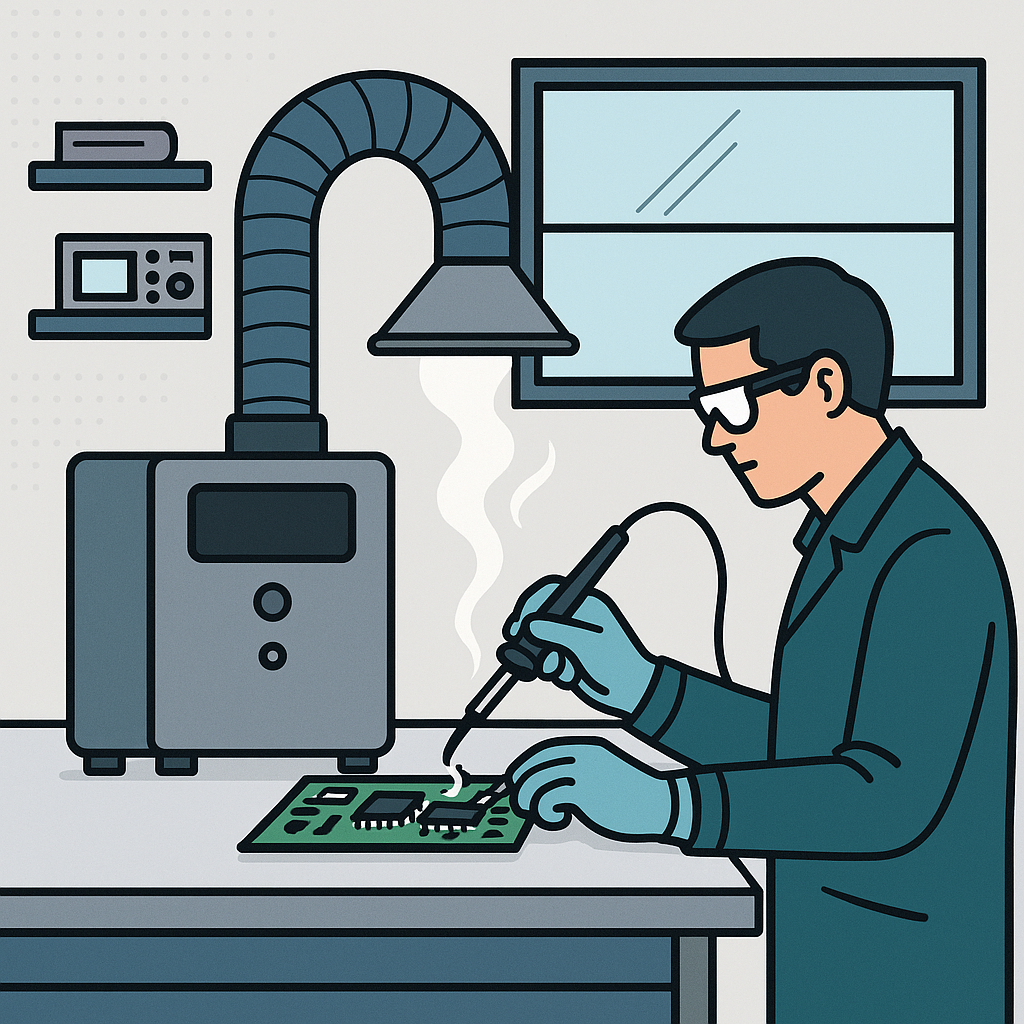Soldering in Electronics Manufacturing
Soldering is a critical process in electronics manufacturing and various soldering methods are used to join components on circuit boards with precision. However, the process of soldering also leads to generation of potentially harmful fumes that are released from the solder and flux. Soldering fume extractors can help to capture and control the fine particulate matter in the soldering fumes and are used to maintain a clean and safe working environment by removing the harmful fumes at the source.
Dangers of Soldering Fumes
Soldering fumes are generated from the solder and flux and contain extremely harmful chemicals like rosin and lead. While the volume of fumes is not very high, they are highly toxic and regular exposure can lead to a multitude of issues including eye and throat irritation, headaches, and in some cases, long-term respiratory issues. Workers near the stations are posed with the highest risk and it becomes critical to include soldering fume extractors to protect the health of the workers.
How a Soldering Fume Extractor Works
A typical soldering fume extractor works in 3 steps:
- Capture of Particulate Matter: The generated fumes are captured by means of a suction hood positioned close to the fume generation point, without disrupting the work or the worker.
- Filtration of Harmful Particles: The fumes consist if fine particulate matter that get filtered out by means of a physical filter or electrostatic filtration. The FumeKiller® makes use of electrostatic filtration to filter the fumes.
- Release of filtered air: The filtered air is then released through the system outlet, either back into the shop floor or to the outside by means of ducting.
Type of Fume Extractor Required
Depending on the size of the operation, available space among other factors, different types of fume extraction systems are available to control soldering fumes.
- Portable Fume Extractor: These units are small and are better suited for smaller soldering operations for individual workstations.
- Semi-Centralized / Centralized Fume Extractor: This type of system is suited for high volume production lines and multiple workstations are connected to a single fume extractor unit.
- Type of Filter: Soldering fume extractor manufacturers may use different types of filters. The units may use either physical filters like HEPA filters or electrostatic filter modules.
The type of fume extractor required may be finalized based on the specific requirement.
Benefits of a Soldering Fume Extractor
In addition to protecting worker health, fume extractors help maintain compliance with safety regulations set by local and national agencies. These regulations often set limits on permissible exposure to airborne contaminants. Installing and maintaining effective fume extraction systems helps companies meet these legal requirements and avoid penalties, while also showing a commitment to employee safety and workplace standards.
Clean air not only protects people, but also contributes to a better working environment. Workers are more focused and productive when they are not breathing in irritants. Equipment and sensitive components also benefit from reduced contamination, which can improve overall product quality. Over time, companies that invest in proper air extraction see fewer health-related absences and reduced equipment maintenance costs, making it a smart operational decision as well.
Soldering fume extractors have become a standard part of electronics manufacturing. They are simple in design but critical in function, and they support both health and performance in the production process. As the industry continues to grow and place more emphasis on safety and quality, the role of fume extraction systems will remain central to responsible manufacturing practices.For more information on soldering fume extraction systems or in case of any requirement for the same, please get in touch with us today.

